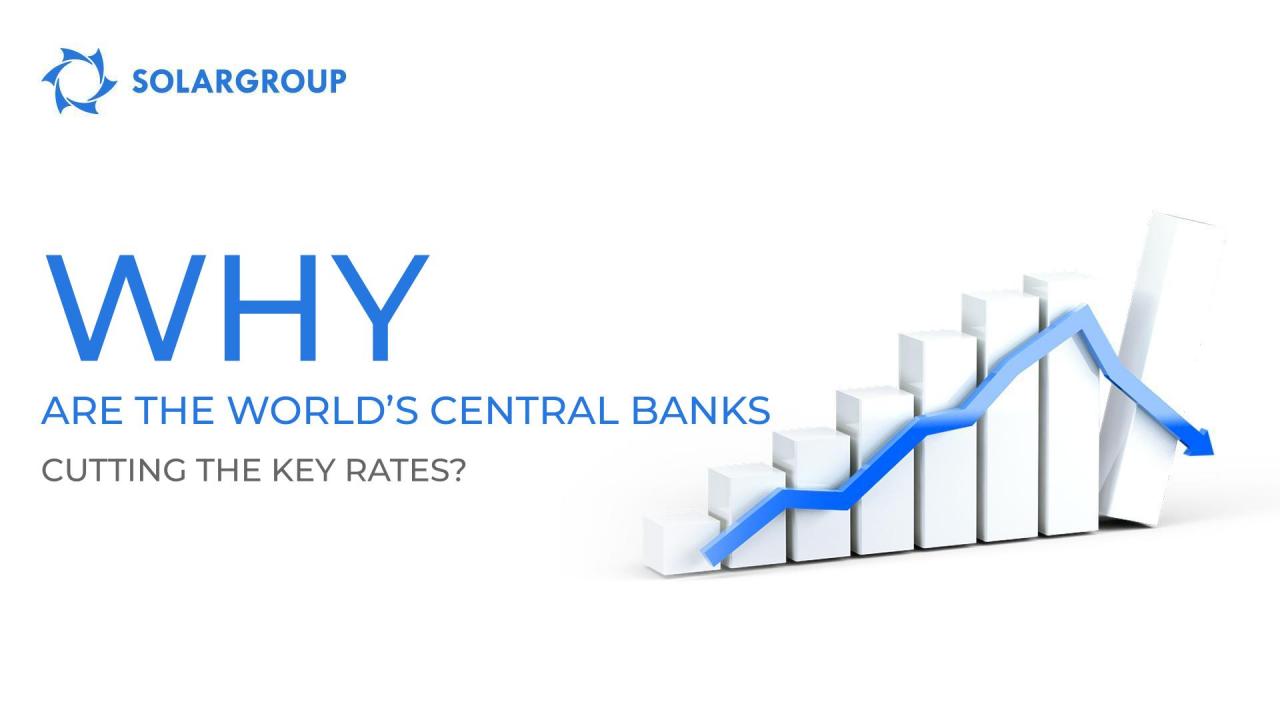
Why are the world's central banks cutting the key rates?
We occasionally see information in the financial news about the Central Bank reducing or increasing the key rate. But most people do not understand what this means for the economy, and why the regulator needs changing this indicator.
To begin with, any commercial bank you can get a loan from borrows money from the Central Bank. The key rate reflects the minimum interest rate at which money is available to private financial organizations in the national bank. The same applies to deposit accounts: the key rate reflects the maximum interest rate at which the Central Bank accepts funds from commercial banks.
Changing the key rate affects the level of inflation in a country, the financial activity of businesses and ordinary citizens, and this makes it an important financial policy tool.
Lowering the rate stimulates economic growth: by reducing the cost of loanable funds, production and consumption develop faster, businesses earn more profit while people spend more. At the same time, the inflation rate in a country is growing and the indicator of population's debt load is increasing.
Increasing the rate, on the contrary, stabilizes the economy: expensive loans reduce consumer demand and slow down business development. We can observe "clearing" of the financial market: financial "bubbles" burst without affordable loans. At the same time, inflation and consumption in the country reduce.
The slowdown in the global economy growth has forced central banks in a lot of developed countries to cut the key rates at the end of 2019. And the European Central Bank set the key rate at zero in the spring of 2016. Most countries with strong economies also lowered the rate to almost zero, since the efficiency of using this tool decreased even before the Covid-19 crisis had begun. The Central Bank of the Russian Federation does not yet see the need for a maximum reduction in the key interest rate, but does not rule out its gradual reduction to revive the markets.
The introduction of quarantine restrictions in most world countries was the beginning of a unique stage in the global economy. The sharp decline in demand for goods and services was caused not by the economic recession, but happened due to the coronavirus spread. The epidemiological situation has restricted people's access to a lot of goods and services, thus leading to a significant reduction in demand in a number of industries.
The main task of central banks in this context is to maintain the level of the population's financial welfare and create a favorable environment for companies to overcome the crisis.

